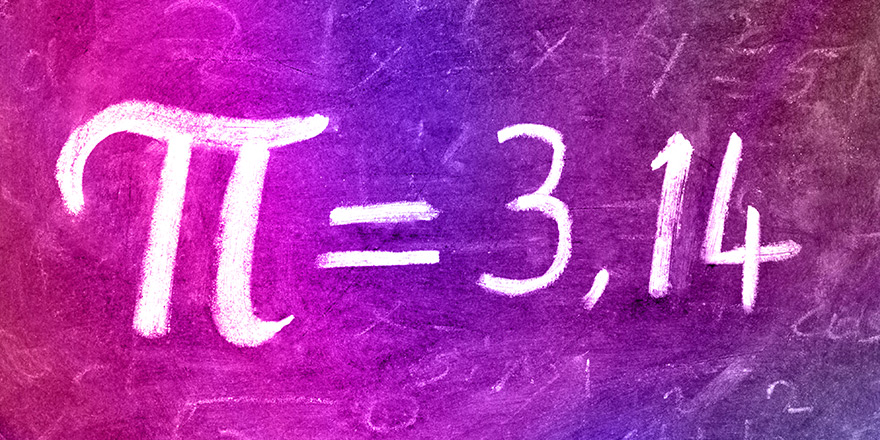Hidden insights: It’s all in the math
On Pi Day, we celebrate mathematicians who have had an influence on us all. From recognized professionals to first-grade math teachers, we salute you!

“We have completed our terrain relative navigation. Current speed is about 30 meters per second, altitude is about 300 meters off the surface.
Sky Crane maneuver has started. About 20 meters off the surface. We’re setting signals from the MRO.
Tango delta. Touchdown confirmed. Perseverance safely on the surface of Mars, ready to begin seeking for signs of past life.”
Watching the footage from NASA’s Perseverance rover landing on Mars’ Jezero Crater on 18 February 2021 still sends chills down my spine. It also reminds me of the massive advances in mathematics and technology that have been made possible through the space program.
Just being able to communicate with objects 225 million kilometers away and moving at up to 54 meters per second relative to Earth requires extremely sophisticated technology and techniques.
On Earth, Nasa’s Deep Space Network (DSN) of large high-gain antennae are strategically placed at 120 degrees to each other in California, USA; Madrid, Spain; and Canberra, Australia for a 24/7 view of Mars. Closer to the rover, the Mars Reconnaissance Orbiter acts as a relay managing the low bandwidth connection (up to 256Kbps) to the DSN with the high bandwidth connection (up to 2 Mbps) to the rover.
Signal processing is fundamental to these sophisticated communications and is used to improve transmission, storage efficiency, and subjective quality and detect components of interest in a measured signal. The principles of which can be found in the classical numerical analysis techniques of the 17th century.
What does this mean to you?
Without knowing it you have already used some digital signal processing techniques when you calculated a running average of values in Excel. This simple action smoothed the values to create a delayed trend that is easier to interpret, as the “noisy” fluctuations towards the extremes have been removed.
The two stages of filtering (or cleaning) and interpreting are common to all digital signal processing, and the same mathematics techniques that the pioneers have been using for decades for advanced scenarios are now available to all of us. I was amazed by the clarity of speech and lack of background noise when I spoke to a friend using the latest AirPods, which use an evolution of the techniques used by the pioneers.
With the continuing increase in compute power in even the smallest and cheapest devices, this proliferation of digital signal processing is rapidly being adopted by many industries. Industrial pump manufacturers are using digital filters on the continuous stream of equipment measurements to remove noise before passing the cleaned measurements through AI / machine learning models to detect the presence of a failure characteristic or trend towards a failure. This combination of digital signal processing and AI/machine learning in industry is proving particularly powerful with even a specific series of workshops organized by the IEEE to progress it.
It’s all in the math
I was first introduced to engineering mathematics (with its focus on the practical implementation of Partial differentiation, Laplace transforms, and Integral functions amongst others) through Ken Stroud’s seminal book “Further Engineering Mathematics.” Unbeknown to me at the time, the mathematics models contained in the book were to be fundamental to how modern electronic equipment interacts with the world.
For the uninitiated, mathematical differentiation allows you to find the rates of change. So, if you had a stream of vibration measurements from an industrial machine, you could calculate the frequency profile of the vibrations. Perhaps even display it like a graphic equalizer on your home audio system. The frequency profile can be an indicator of impending failures, like damage to the pump’s impeller, or predictor for a sudden catastrophic failure, through prolonged operation at the machine’s resonant harmonic.
In digital systems, it is the Finite (and Infinite) Impulse Response (FIR / IIR) filter algorithms that perform the initial filtering of the signal from the digital measurement data stream. These filters apply a weight to each of the measurements within the time window and sum their outputs to calculate the result. As mentioned earlier, a running average would simply have equal weights for each of the measurements. Whereas a filter that was more heavily influenced by each new measurement would have greater weighting on the earlier measurements.
Celebrate the mathematicians
Unfortunately, there is no Nobel prize for mathematics, with the leading mathematicians winning prizes in economics or physics, but there is the Fields Medal. This is the most prestigious award for mathematicians and has been awarded every four years since 1936 at the International Mathematical Congress to at least two young mathematicians for their outstanding achievements.
There are many mathematicians, budding mathematicians, math enthusiasts, teachers and lecturers who have had an influence on us all, in addition to those who have been recognized internationally. So, whether you are currently solving one of the world’s toughest unsolved math problems or helping someone with their first-grade math, I salute you.
How am I going to celebrate Pi Day? Experimenting with FIR filters on my Raspberry Pi4, eating lots of pie and watching Hidden Figures, the story about the mathematicians who served a vital role in NASA during the early years of the US space program.
Happy Pi Day!